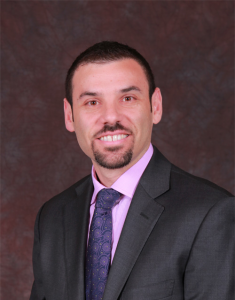DURHAM, NC — As VA’s National Emergency Medicine chief, Chad Kessler, MD, appreciates the importance that communication plays in seeing people through a crisis. Not only is it necessary in order to coordinate activities across a national healthcare system but being able to talk with and hear from others going through the same experience lets people know that they aren’t alone in their struggle.
“We’ve been the front line of this pandemic,” Kessler said, referring to VA’s 141 emergency rooms and urgent care centers. “We’re where people go when they get scared, or they get nervous, or something bad happens. We saw a lot of that at the beginning.”
Soon, Kessler was helping coordinate the deployment of emergency medicine physicians and nurses from all over the country to hot spots like New Orleans and New York, where the virus was spiking. Those providers were making up procedures on the fly and hammering out best practices one hard-fought lesson at a time. Kessler and others at VA realized that those lessons needed to be shared to staff across the country.
“We had to find a way to get information out quickly to people,” Kessler said. “We couldn’t rely on the New England Journal of Medicine a year later telling you what to do.”
That’s how “COVID in 20” began.
A biweekly video cast hosted by Kessler, it serves as a virtual roundtable of experts sharing information about a specific topic. Each 20 minute episode begins with a musical selection—sometimes recorded, sometimes played live on the videoconference—before the panel dives into the chosen topic.
The series kicked off on April 20 with an episode featuring physicians working in the emergency room at the New Orleans VAMC. The episode dealt with early diagnosis for COVID-19, outdoor treatment set-ups, patient screening procedures and other topics that were of critical interest to facilities and providers treating novel coronavirus patients at the beginning of the pandemic. While the initial episode was recorded underneath the heavy pall of the spiking pandemic, Kessler kept the episode conversational, being sure to ask the New Orleans staff how they were caring for themselves when they weren’t caring for patients.
“It was a great way of sharing information,” Kessler said. “At the same time, people were really stressed and really down. You were working 16-hour days, six days a week, taking care of dying people every day. It was a way to take a break for 15 minutes during a very dark time.”
As the pandemic stretched on and hospitals began standardizing care, the show evolved.
“The show transformed from conversations about people getting intubated and dying to what are we going to do with the vaccine rollout once we get it,” Kessler explained. “Then it moved into long COVID. What do you do when you’re recovering and can’t raise your arms over your head and can’t take a deep breath?”
The show has even touched on sensitive topics like diversity and inclusion and how race affects who is getting access to vaccines and who is receiving longer care.
“COVID in 20” has had hundreds of thousands of viewers and released its 114th episode on May 20.
“We’ve tapped into a niche to reach people on the frontline who were challenging to reach before,” Kessler explained.
The department has noticed the program’s success, and Kessler has had a number of VA leaders on the show.
“We’ve had on very high-level leaders that most people on the frontline have no access to,” Kessler said. “They can see them as real human beings, and it makes them so accessible. It builds trust in the entire organization by their participation and by them being themselves, rather than the undersecretary for health.”
As VA sees the possibility of a post-pandemic world, the show continues to change. Rebranded as “C-20,” the episodes are no longer limited to COVID-related content.
“We can learn lessons across the nation. Share strong practices,” Kessler said. “What I hope is someone is doing something about telephysical therapy in Maine and then someone in Tucson says that’s really cool we can do that here. And then there you go. Diffusion of information.”
The next step is to use the same model that made “C-20” a success and gear it toward veterans, Kessler said. “We got approached about doing this type of show for veterans—talking to them about vaccines and vaccine hesitancy and where do I go to get this information on MyHealthevet and how do I get my records on my phone. Things that are important to veterans on a veteran level, but coming from experts on VA.”
“The people who watch and send emails to me—that really keeps us going. I feel like we’re building something here,” he added. “My secret goal is to change the way people see VA.”



